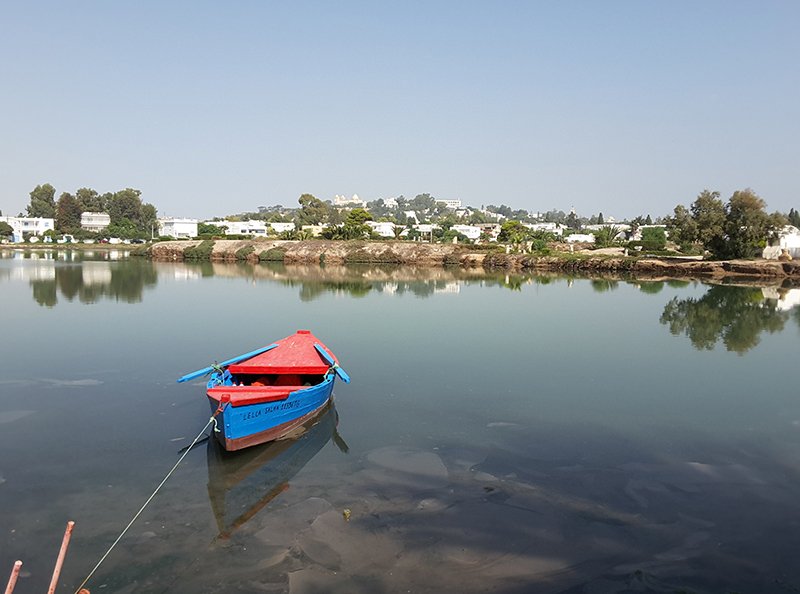Recensione al volume North Africa under Byzantium and Early Islam, Susan T. Stevens, Jonathan P. Conant edd., Dumbarton Oaks Pub Service, Washington D. C. 2016; XII + 322 p.; ill.; index; 28,5 cm; ISBN 978-0884024088
Abstract
Incentrato sulla transizione dell’Africa romana dall’età classica a quella medioevale, il volume raccoglie una serie di saggi che tentano di ribaltare la visione pessimistica dell’età bizantina e di spiegarne le peculiarità non come il frutto di imposizione proveniente dall’Oriente ma come il risultato quasi inevitabile del contesto politico, economico e culturale nel quale i Bizantini si inserirono nel VI secolo.Riferimenti bibliografici
Aiello V. (2005), I Vandali nell’Africa romana: problemi e prospettive di ricerca, in Le frontiere dell’impero nella Tarda Antichità. (= Mediterraneo Antico, 8), 547-569.
Aiello, V. (2008), La Sardegna tra Vandali, Goti e Bizantini. In margine ad alcune note pagine di Procopio di Cesarea, in L.
Casula, A. M. Corda, A. Piras (edd.), Orientis radiata fulgore. La Sardegna nel contesto storico e culturale bizantino. Atti del Convegno di Studi (Cagliari 30 novembre – 1 dicembre 2007), Cagliari : Nuove grafiche Puddu, 13-38.
Ardeleanu S. (2019), Zum funerärepigraphischen Habit des spätantiken Hippo Regius. Gräber, Kirchen mit Bestattungen und Grabinschriften in ihrem urbanen und sozialen Kontext, Mitteilungen des Deutschen Archäologischen Instituts, Römische Abteilung 125, 401-448.
Cesa M. (1981), La politica di Giustiniano verso l’Occidente nel giudizio di Procopio, Athenaeum 59, 389-409.
Christides V. (2000), Byzantine Libya and the March of the Arabs towards the West of North Africa, Oxford : British Archaeological Reports.
Conant J. (2012), Staying Roman: Conquest and Identity in Africa and the Mediterranean, 439-700, Cambridge – New York : Cambridge University Press.
Hamdoune Chr. (2016) [éd.], Parure monumentale et paysage dans la poésie épigraphique de l’Afrique romaine. Recueil de Carmina Latina Epigraphica, Bordeaux: Ausonius Éditions.
Ibba A. (2012), Ex oppidis et mapalibus. Studi sulle città e le campagne dell’Africa romana, Ortacesus : Sandhi.
Ibba A. (2017), Fra Cartagine e Bisanzio: Godas, i Vandali e i Mauri in Sardegna, in L. Montecchio (ed.), Tradimento e traditori nella tarda antichità, Perugia : Graphe.it Edizioni, 115-131.
Kaegi, W. E. (2010), Muslim Expansion and Byzantine Collapse in North Africa, Cambridge : Cambridge University Press.
Lander S. L. (2017), Ritual sites and religious rivalries in Late Roman North Africa, New York : Cambridge University Press.
Lassère J.-M. (2015), Africa, quasi Roma (256 av. J.-C. – 711 apr. J.-C.), Paris : CNRS éditions.
Leone A. (2007), Changing townscapes in north Africa from late antiquity to the Arab conquest, Bari : Edipuglia (= Munera 28).
Leone A. (2013), The End of the Pagan City. Religion, Economy and Urbanism in Late Antique North Africa, Oxford : Oxford University Press.
Mattingly D. J. et al. (2017), Trade in the Ancient Sahara and Beyond, Cambridge – New York : Cambridge University Press.
Merrills A.H. & Miles R. (2010), The Vandals, Malden : Blackwell Publ.
Modéran Y. (2003a), Une guerre de religion : les deux églises d’Afrique a l’époque vandale, Antiquité tardive 11, 21-44.
Modéran Y. (2003b): Les Maures et l’Afrique Romain (IV-VII siècle), Rome : École Française de Rome (= BEFAR 314).
Modéran Y. (2014), Les Vandales et l’Empire romain, Arles : Editions Errance.
Panella C. (1993), Merci e scambi nel Mediterraneo tardo antico, in A. Schiavone (ed.), Storia di Roma, 3, L’età tardoantica, 2. I luoghi e le culture, Torino: Einaudi, 611-697.
Spielvogel J. (2005), Arianische Vandalen, katholische Römer: die reichspolitische und kulturelle Dimension des christlichen Glaubenskonflikts im spätantiken Nordafrika, Klio 87, 201-222.
Thébert Y. (1983), L’évolution urbaine dans les provinces orientales de l’Afrique romaine tardive, Opus 2, 99-131.
Copyright (c) 2020 Antonio Ibba

Questo lavoro è fornito con la licenza Creative Commons Attribuzione - Non opere derivate 4.0 Internazionale.
Gli autori che pubblicano su questa rivista accettano le seguenti condizioni:
Gli autori mantengono i diritti sulla loro opera e cedono alla rivista il diritto di prima pubblicazione dell'opera, contemporaneamente licenziata sotto una Licenza Creative Commons - Attribuzione - Non opere derivate 4.0 Internazionale che permette ad altri di condividere l'opera indicando la paternità intellettuale e la prima pubblicazione su questa rivista.
Gli autori possono aderire ad altri accordi di licenza non esclusiva per la distribuzione della versione dell'opera pubblicata (es. depositarla in un archivio istituzionale o pubblicarla in una monografia), a patto di indicare che la prima pubblicazione è avvenuta su questa rivista.
Gli autori possono diffondere la loro opera online (es. in repository istituzionali o nel loro sito web) prima e durante il processo di submission, poiché può portare a scambi produttivi e aumentare le citazioni dell'opera pubblicata (Vedi The Effect of Open Access).








